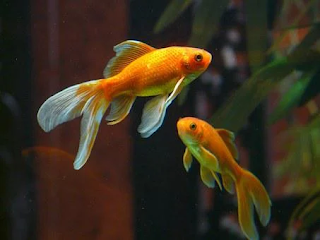499

Researchers at the Queen’s University Belfast, Northern Ireland, have reported that goldfish species might harm the surrounding ecosystems if they enter the wild. Invasive species are one of the major causes of biodiversity loss, and the pet trade is responsible for the aquatic invasive species. Many pet owners consider setting their pets free to be the more humane option. But, this approach is not meant for goldfish. Recently, they have been found in Atlantic Forest brook, breaking their confinement, and are flourishing. The release of such pets into the wild could lead to destructive outcomes for biodiversity.
Image Credits: Pixabay
To better understand the ecological risks produced by various species within the pet trade, researchers decided to study the most common aquatic pets in Northern Ireland: goldfish and white cloud mountain minnow. Goldfish are the absolute starter pet as they are cute, tiny and easy to take care of. These fishes first domesticated over a thousand years ago. Since then, they have established non-native populations around the globe. On the other hand, the white cloud mountain minnow is a species with limited invasion in biodiversity.
Researchers developed a new method for determining the environmental risks of invasiveness of the pets, based on the availability of species, behaviour and feeding rates. Their research showed that goldfish were voracious, consuming food more than the white cloud mountain minnows and native species. Based on the behavioural patterns, goldfish were found to be braver, a characteristic linked to invasive spread.
“Our research suggests that goldfish pose a triple threat. Not only are they readily available, but they combine insatiable appetites with bold behaviour. While northern European climates are often a barrier to non-native species surviving in the wild, goldfish are known to be tolerant to such conditions and could pose a real threat to native biodiversity in rivers and lakes, eating up the resources that other species depend on,” said Dr James Dickey from the School of Biological Sciences at Queen’s University Belfast.
“Our research highlights that goldfish are high risk, but we hope that the methods developed here can be used to assess others in the pet trade across Ireland and further afield. Readily available species are most likely to be released, so limiting the availability of potentially impactful ones, alongside better education of pet owners, is a solution to preventing damaging invaders establishing in the future.”
The detailed research has been published in the journal NeoBiota.
Follow us on Medium!


1 comment
[…] have hard surfaces that form those reefs, which provide new habitats and thus contribute to increased biodiversity. These reefs create an environment for organisms to find shelter, feed, and reproduce. On the […]